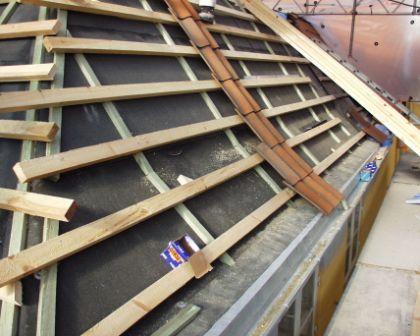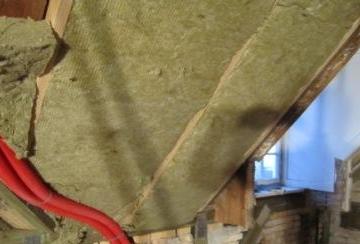

Roof replacement with energy optimisation
Building Type 2: 1890-1920
Many years of wear and tear on roof coverings, flashings, roof valleys, etc. mean that at some point a whole or partial replacement will be required. Since the lifespans of the aforementioned building parts and materials can be variable, a partial replacement of the roof covering will often be sufficient. In the case of partial repairs, the degraded materials are replaced and the structure is rebuilt according to the original.
If the roof covering is to be replaced due to general wear and tear, there is a current requirement that this be supplemented with a subroof solution. This is in order to ensure more comparable lifespans for the various parts and materials within the roof structure, thereby extending the lifespan of the roof as a whole.
As part of the building’s envelope, the roof structure has a bearing on the building’s energy consumption. Thus there is currently a general requirement that the energy efficiency of the roof structure be improved e.g. with the use of insulating materials. It is important that the retrofitting of such insulation be carried out with care and that any ventilation needs of the structure not be overlooked and thereby cause damage to the building.
GODE TAGE | DK has a number of illustrated examples showing how a roof structure can best be constructed to achieve good durability. There is also good advice on a selection of subroof solutions at DUKO | DK. In addition, see BYG-ERFA: Subroofs and roof structures
A number of general recommendations on roofing work based on many years of accumulated experience from publicly funded building renovation projects can be found at BVB | DK.
Photos: BvB/Kristian Køje and sbs/Graves Simonsen (bottom)